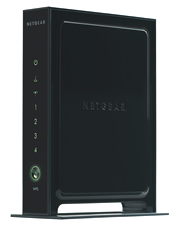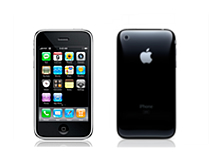Author Archive
Tuesday, November 23rd, 2010
 Hey, everyone, Josh from Computer Fitness back with another award-winning article to help you with your computer conundrums. Hey, everyone, Josh from Computer Fitness back with another award-winning article to help you with your computer conundrums.
Sometimes bad things happen to your PC. It happens to the best of us. Something goes wrong and before you know it, it’s time to break out the dusty restore discs. Well, there are ways around having to burn your system to the ground. One of these ways, built into the Windows operating system, is the Restore Point software.
Restore Point sets up places in your system where you can revert back to in case of errors. This feature is great for several reasons. First of all, you can choose when to set these. By doing this, you can schedule them or just have them automatically occur when you’re installing new programs. This is good in case the program or update does damage to your machine’s stability. You simply roll back to the start date and you’re good to go.
Another beneficial aspect of Restore Points is that they are usually safe in the case of a Windows failure. This is not to say that if your HDD breaks down, you can just use a Restore Point. Rather, you can sometimes use them in conjunction with a system restore disc or copy of Windows to get back to where you were from an OS standpoint.
Now, the points are not to be confused with complete system backups. You’ll need either third-party software or Windows 7 Ultimate to do that. However, the Restore Points do allow for users to revert to previous versions of the Registry and various Windows aspects.
More Info
Microsoft Windows System Restore
What is Windows System Restore?
What are the system recovery options in Windows 7?
-Josh
ComputerFitness

Tags: pc, Recovery, Safety, System Restore, Windows, Windows 7
Posted in PC | No Comments »
Friday, November 19th, 2010
 from http://www.netgear.com November 2010 Hey, everyone, Josh from Computer Fitness back with another award-winning article to help you with your computer conundrums.
Wifi has been around for years now. It has grown and expanded into something that is a part of our daily lives. For years, Wireless G was the standard by which all wireless devices were designed. However, recently, Wireless N has taken over as the new goal for developers and technological enthusiasts. Now, a lot of websites and products will talk about Wireless N and how you need it desperately. Here are some things you should know about Wireless N before you proceed.
It Is Faster than Wireless-G
Now, Wireless N is definitely faster than Wireless G. You can send enormous amounts of data over a Wireless N network in a fraction of the time it would take on a G network. This is great for streaming video and audio inside of your home or office, as well as moving around files for backup.
Requires a New WiFi Card
Your old G card won’t cut it here. This is a new wireless standard and, as such, requires new hardware. Don’t you just love technology? So before someone at a big box retail store tells you that you need a Wireless N router, account for the necessary new hardware you’ll have to buy as well.
There is No Internet Connection Fast Enough
While N is faster than G, there is currently no Internet service out there that can match the speeds. At most, your local ISP (Internet Service Provider) could offer something that uses 10% of your Wire
Less N connection. So remember, you don’t NEED Wireless N unless you’re moving data around your house a lot. A good example here is streaming video wirelessly from a desktop to a TV.
Additional Information
Reviews: CNET PCmag
-Josh
ComputerFitness

Tags: Networking, pc, Setup, WiFi, Wireless, Wireless G, Wireless N
Posted in Local Area Network (LAN), Networking | No Comments »
Thursday, November 4th, 2010

Hey, everyone, Josh from Computer Fitness back with another award-winning article to help you with your computer conundrums.
So you need a new computer? Well, it happens to all of us. Eventually our machines, even though they were once powerhouses, need to be replaced. Now, if you’ve been out of the game for a while, you might not know about everything you need to for today’s applications. Well, here are some things to look for when picking up or building a new computer.
Processor (CPU)
The CPU, or Processor, in a computer is what helps it perform most of its duties. The CPU allows the computer to solve equations, execute tasks, etc. The faster this is, the quicker programs will run. Now, for today’s applications, you want something in the Dual Core line with at least 2.5 GHz for each core. If you really want a screaming fast machine, go with a Quad Core at 3.0 GHz or more. The latter is good for gaming or advanced graphical work, while the former will be good for day to day processing without the need for upgrades in the near future.
Memory (RAM)
While the CPU helps to run programs, the RAM assists. RAM is temporary memory used to store the data needed to run programs. RAM holds the data and the CPU processes it. Now, you want at least 2GB of DRR2 RAM these days, though 4GB of DDR3 RAM would be better. Most operating systems will use up 1GB to start, so you’d already be 50% down with 2GB. Better to go with the 4GB, in my opinion.
Storage Space (Hard Drive)
Think of this like your brain’s long-term memory. You use the Hard Drive (HDD) to store data permanently. This is used to hold your operating system, photos, documents, etc. Bigger is better here, so go with at least 400 GB. Now, if you’ve embraced the digital age and frequently purchase games, movies, and music online, I’d recommend going with 1 TB for your HDD. You’ll avoid needing a backup soon, besides using multiple drives can get complex.
-Josh
Computer Fitness

Tags: HDD, mac, new computer, pc, RAM, Specs
Posted in Hardware Overview, Mac and PC, PC | No Comments »
Friday, October 29th, 2010
 Hey, everyone, Josh from Computer Fitness back with another award-winning article to help you with your computer conundrums. Hey, everyone, Josh from Computer Fitness back with another award-winning article to help you with your computer conundrums.
Recently, another glitch in the iPhone’s security was found. When you lock the screen, there is a chance for people to gain access to your system, despite having a lock in place. It involves using the Emergency Call function, and a few quick button presses. This is concerning for many people, and Apple has yet to address it. There are rumors that it will be fixed in the upcoming software update, 4.2, but we aren’t sure yet.
Keeping your mobile device safe is important. The amount of data on it is vital to your business, personal life, or both. This is why proper security measures are so important. No matter which device you use, always password protect them. Whether it is a PIN or a 32 Digit masterpiece of a lock, make sure you take the right steps.
Tied into this is keeping passwords up to date and changing them as necessary. For example, if you set up your iPhone for SSH, which allows file transfers, etc., then you want to change the default password from “alpine” to whatever else. The same goes for routers and wireless networks. Always setup encryption, no matter how simple. A WEP goes a long way to keep people from stealing your data on your home wireless network.
Remember, you’re the best line of defense against digital attackers. You don’t have to be a specialist, but you do need to take the initiative.
Josh

Tags: Apple, Information Security, microsoft, Networking, passwords
Posted in Information Security | No Comments »
Friday, October 22nd, 2010
 Hey, everyone, Josh from Computer Fitness back with another award-winning article to help you with your computer conundrums. Hey, everyone, Josh from Computer Fitness back with another award-winning article to help you with your computer conundrums.
PC Backups are an important part of computer ownership. Just keeping a copy of your files is a great start. However, there are often programs that get left behind if you only save your media. Software backups vary as to what they offer, but an invaluable tool is PC Imaging software.
Think of this like a camera. The software will take a “picture” or image, on your machine, which you can use later. The image, in this case, contains everything on your computer at that point. Later, if you need to restore your PC’s files to another machine, you can practically pick up from where you left off.
Another valuable use of this technology is to create a template for new machines. If you run a small to medium sized business, odds are that you use similar or identical PCs in your office. In this case, your IT folks can configure the machines are necessary using a singular image file. This makes turn around much faster on broken machines.
Some software solutions to help you out with this are Norton Ghost for PCs and Time Machine for Mac OS X. Time Machine is included with all Macs made since 2008.
-Josh
Computer Fitness

Tags: backups, Information Security, Software, Tips, tools
Posted in Mac and PC | No Comments »
Friday, October 15th, 2010
 Hey, everyone, Josh from Computer Fitness back with another award-winning article to help you with your computer conundrums. Hey, everyone, Josh from Computer Fitness back with another award-winning article to help you with your computer conundrums.
We all want to protect our PCs. After all, a multitude of threats exist. We need to squash them before they even get to our door. But how do we do this? The gut reaction might be to implement as much protection software as possible. However, this is not the case. In fact, if you start stacking protection software you are setting yourself up for future PC woes.
It used to be the case where you had anti-virus software as well as malware protection and even a firewall. They were all separate programs from different companies. Today, and for the past several years, companies are creating all in one solution for your security. This means you can pay one fee and have all of your bases covered.
Remember that keeping your PC safe means also keeping it from getting bloated with old software. Always be careful about what you install.
-Josh
Computer Fitness

Tags: Malware, pc, protection, Software, Viruses
Posted in Information Security | No Comments »
Friday, October 8th, 2010
 Hey, everyone, Josh from Computer Fitness back with another award-winning article to help you with your computer conundrums. Hey, everyone, Josh from Computer Fitness back with another award-winning article to help you with your computer conundrums.
Cyber criminals are out there; there´s no denying it. More and more we hear about attacks in the US or abroad against networks, companies, and governments. This is the same as it ever was, people trying to take from others. The methodology has changed and that is what we´re going to talk about today. One of the more common ways that attackers will go after a network is a DDoS, or Distributed Denial of Service.
When you contact a website, send an email, etc. You are exchanging data. That´s how this whole thing works. Various pieces of hardware route the data and make sure it gets divided up and sent to the right places. Now, have you ever seen a website that was “just taking forever today”? That´s an example of too much traffic being funneled through too small of an area. What a DDoS does, is a play on this weakness and flood the target with traffic.
Now, rather than some of the other methods of attack where a single user is the culprit, DDoS relies on hundreds of thousands of machines all forcing their way in at once. This leaves the routers et al. with far too much traffic to handle and they crash under the weight; the attackers now have what they want, a denial of service to anyone who uses the site.
Further reading:
-Josh
ComputerFitness.com

Tags: Attackers, DDoS, denial, Hackers, Information Security, internet, traffic
Posted in Internet | No Comments »
Friday, October 1st, 2010
 Image from http://ie.microsoft.com/testdrive/ October 2010 Hey, everyone, Josh from Computer Fitness back with another award-winning article to help you with your computer conundrums.
Microsoft is releasing a new version of Internet Explorer, version 9 to be specific. Now, there are a lot of claims about how fast and amazing this new version of IE is. Currently, IE9 is in beta, which means it is out for public testing. Users can relay their experience with Microsoft and inform them of bugs and other issues they’ve come across.
Hardware Acceleration is a big part of many websites looking to use HTML5 and make their websites look and feel even better. Hardware Acceleration means that IE9 can use your graphics card and more to make the browser run smoother and do more impressive things. This is a cool proposition for programmers looking to create exciting content like interactive games.
IE9 will load quicker and run faster. According to their website, it will start up quicker and handle updates quicker. Microsoft is working to take the updates out of your hands so you don’t have to worry about them.
Popular Sites is something that is a part of most web browsers these days, and IE9 will support it. When you open a new tab in your browser, you will see tiny boxes with images on your most visited websites. This is handy for when you use the web for a few select sites and frequent them often. .
All in all, IE9 is promising an improvement over past versions of IE as well as over other browsers in general. It will be interesting to see how this plays out, considering that while IE has a large share of the market, that piece is slipping. IE9 might be just what Microsoft needs to breathe life back into the software, or it could be the final iteration of the series. For more info check out Microsoft’s IE9 website.
-Josh
ComputerFitness.com

Tags: IE 9, IE9, internet, internet explorer, microsoft, pc, Software, Windows
Posted in Internet, PC | 2 Comments »
Thursday, September 23rd, 2010
 Hey, everyone, Josh from Computer Fitness back with another award-winning article to help you with your computer conundrums. Hey, everyone, Josh from Computer Fitness back with another award-winning article to help you with your computer conundrums.
So your Windows machine is running a little slowly, eh? It happens. Over time, machines just tend to accrue a little wear and tear. Unlike a physical machine, for example, you can’t always crack open the case and just know what part to change. Software is usually at fault for a lot of experience issues, so here are some tips to clean up your PC and get it running like new.
Defragment
We’ve gone over this before. Defragging takes all the bits and bytes on your machine and rearranges them in the proper order. Fragmentation is the reason a lot of programs will open slowly and why finding files can take a lot of time. Your PC has to gather up all the pieces, rather than just pointing to a single location.
Clear Your Cache
Your cache is a gathering of temporary files used by your PC for various reasons. Over time, they build up and your PC can really slow down as a result. The biggest creator of these files is Internet browsing. By clearing out your cache, you can free up precious resources your machine desperately needs. To do this, open up My Computer. Right-Click on your “C:” and hit properties. Click “Tools” and then select Disk Cleanup.
Turn off Visual Effects
If you aren’t hung up on your operating system looking pretty all the time (or don’t have the RAM to back it up), you can disable the cool visual effects in Windows. This is far less taxing your system and as a result, programs will run faster in general. To do this, right click on My Computer and hit Properties. In the bottom left corner of the new window, you should see a link that says “Adjust Visual Effects”. Now, just select “Adjust for Better Performance”. Your machine will process for a minute and then your PC will look reminiscent of Windows 2000, but it will run faster for it.
-Josh
Computer Fitness

Tags: computer, machine, pc, Tips, Tweaks, Windows
Posted in Desktop - Workstation, PC, PC Maintenance, Software | No Comments »
Friday, September 17th, 2010
 Hey, everyone, Josh from Computer Fitness back with another award-winning article to help you with your computer conundrums. Hey, everyone, Josh from Computer Fitness back with another award-winning article to help you with your computer conundrums.
Okay, anyone who owns an iPhone has heard about jailbreaking. No, you haven’t? Well, let me enlighten you. A term relating specifically to hacking an iDevice, jailbreaking allows users (you!) to run programs and code that has not been sent through the Apple approval process nor submitted to the App Store. In essence, it gives you a lot more freedom when using your device. Now, this sounds good at first. Who doesn’t want to get more for their money? However, jailbreaking is not something to do without thinking first.
If you jailbreak your phone, you are enabling unsigned code to run on your iPhone. Where before you might download apps from the app store without thinking twice about it, now you’re on a case of “do I trust this software publisher”. This is the same situation you are in when you download content to your computer. There could be spyware or a virus in there. Proceed with caution. While you do need to be careful in this brave new world, there are some upsides.
You can get access to content not available on the App Store. This could be anything. People are working all the time to create new and interesting apps. You also get to use custom themes and MMS alerts. I know I’m not the only one who gets sick of the standard message alerts. In short, jailbreaking opens up your device completely…for better or worse.
-Josh
Computer Fitness

Tags: Apple, hacking, ios 4.2, Ipad, Iphone, jailbreaking
Posted in Scripts | No Comments »
|
 Hey, everyone, Josh from Computer Fitness back with another award-winning article to help you with your computer conundrums.
Hey, everyone, Josh from Computer Fitness back with another award-winning article to help you with your computer conundrums.







 Hey, everyone, Josh from
Hey, everyone, Josh from  Hey, everyone, Josh from
Hey, everyone, Josh from  Hey, everyone, Josh from
Hey, everyone, Josh from 
 Hey, everyone, Josh from
Hey, everyone, Josh from  Hey, everyone, Josh from
Hey, everyone, Josh from 

